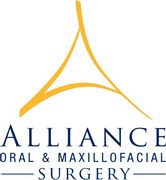Understanding Oral Surgery: What Is Dental Anesthesia & How Does It Work?

The advent of oral surgery created the need to help patients to remain still and relaxed, which is why doctors began utilizing anesthetic. However, advances in medicine make anesthesiology safer and more reliable than ever before. Here is a little more information about how it is used in oral surgery, and how it keeps you comfortable.
Understanding Anesthesia for Oral Surgery
What Is Dental Anesthesia?
Although there are several types of dental anesthesia available for oral surgery, the most common varieties include nitrous oxide, novocaine, and general anesthesia. Each variety is designed to induce relaxation and alleviate pain as some dental procedures require surgeons to access dental nerves directly. Before any anesthesia is recommended, surgeons carefully weigh the nature of the problem and the patient’s overall health.
How Does Anesthesia Work? 
Nitrous oxide sedation, also referred to as laughing gas, is an inhaled mix of NO2 and oxygen. After the mix is inhaled, the NO2 crosses the blood-brain barrier to interfere with pain receptors temporarily, alleviating pain and helping the patient to relax. Novocaine is typically used as an injectable nerve blocker, allowing surgeons to numb the nerves of the face and jaw temporarily. In cases where the patient needs sedation for a long time, general anesthetic may be recommended, where the patient would be completely asleep throughout the procedure.
Whether you struggle with dental anxiety or you need to undergo an oral surgery, the professionals at Alliance Oral & Maxillofacial Surgery in Keller, TX, can help. With a commitment to excellence and a focus on safety, these experienced dental surgeons can help you with everything from routine extractions and wisdom teeth removals to bone grafts, dental implants, and complex oral surgeries. To find out more about how they can help you, visit them online or call (817) 741-2200.
About the Business
Have a question? Ask the experts!
Send your question

